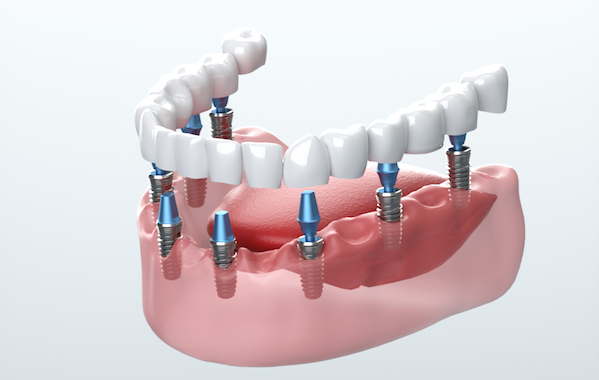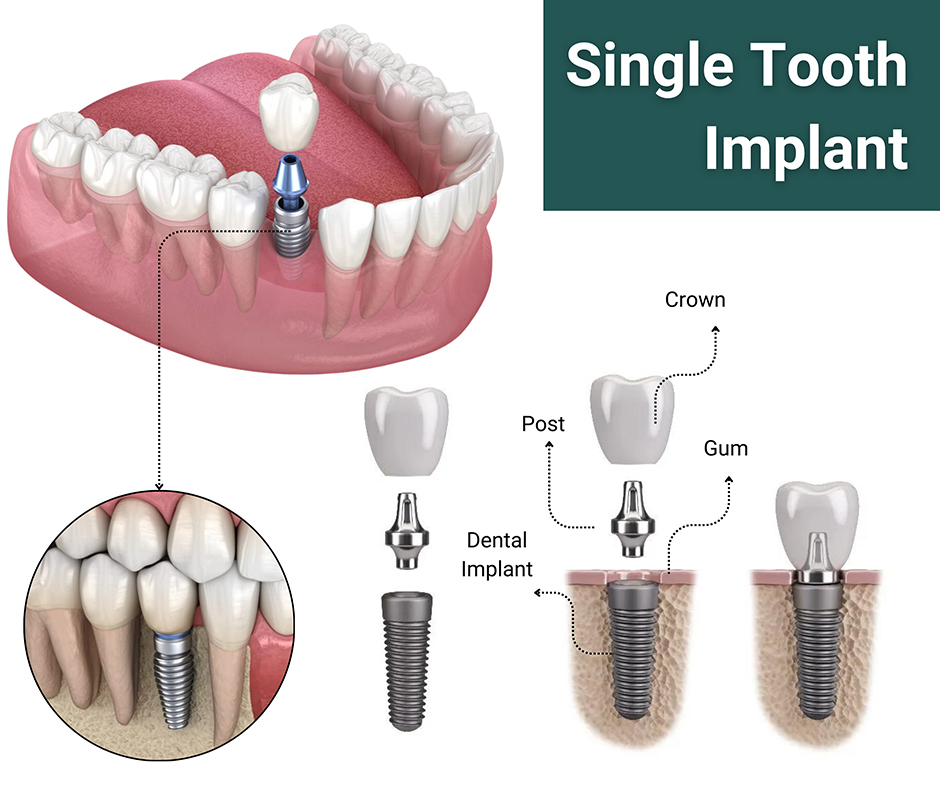Not known Facts About Dental Implants
The 7-Second Trick For Dental Implants
Table of ContentsMore About Dental ImplantsNot known Facts About Dental ImplantsLittle Known Facts About Dental Implants.A Biased View of Dental Implants
are clinical devices operatively dental implanted right into the jaw to restore an individual's capacity to eat or their appearance. They supply assistance for artificial (fake) teeth, such as crowns, bridges, or dentures. When a tooth is shed as a result of injury or disease, a person can experience difficulties such as rapid bone loss, faulty speech, or adjustments to chewing patterns that cause discomfort.
Structure of The Oral Implant System selecting oral implants, speak to your dental provider concerning the prospective advantages and dangers, and whether you are a candidate for the treatment. Things to think about: Your general health is a vital element in determining whether you are a great candidate for oral implants, the length of time it will certainly require to heal, and the length of time the implant might stay in place.
Smoking cigarettes may influence the healing procedure and reduce the long-term success of the dental implant. The healing procedure for the dental implant body might take several months or longer, during which time you commonly have a momentary abutment instead of the tooth. the oral implant treatment: Very carefully follow the oral health instructions provided to you by your oral provider.
Some Known Details About Dental Implants
Implant failing can result in the need for another surgery to repair or replace the implant system. Restores the ability to chew Restores cosmetic look Aids maintain the jawbone from reducing as a result of bone loss Maintains the wellness of the bordering bone and gum tissues Aids maintain surrounding (neighboring) teeth steady Enhances lifestyle Damage to bordering natural teeth during implant placement Injury to the surrounding cells throughout surgical procedure, such as sinus opening Injury during surgical treatment (for instance, fracture of bordering jawbone) Insufficient function, such as feeling like the teeth do not attack with each other typically A sensation that the tooth hangs or turning in position resulting from an abutment screw loosening up Implant body failure (looseness of the implant body) as a result of systemic infection, which might be more probable in people with unchecked diabetics issues due to neighborhood infection in bone and periodontals supporting the dental implant visite site body as a result of delayed recovery, which may be more probable in patients that smoke Problem cleaning the gum tissues around the implant, causing bad oral health Without treatment periodontal condition Post-surgical pins and needles due to nerve impingement or damages Always inform healthcare carriers and imaging service technicians that you have dental implants prior to any magnetic resonance imaging (MRI) or x-ray treatments.
FDA is not knowledgeable about any kind of negative occasions reported for MRI or x-ray procedures with oral implants. Dental implants systems are normally made of products that adhere to worldwide consensus requirements of the International Organization for Standardization (ISO) or ASTM International. These requirements have information of what makes a safe material.
Various other products such as gold alloys, cobalt-based alloys, titanium alloys, or ceramic products are in some cases utilized. The safety and security profiles of these materials are widely known. Oral dental implant systems are evaluated according to international consensus requirements. Biocompatibility screening, to reveal that physical call with the tool does not create you can try these out complications like inflammation or allergic reaction, becomes part of the analysis that aids ensure the materials in the dental implant system are risk-free and do not trigger damaging results when dental implanted in people.

Dental Implants - Questions
Some people are not eligible for dental implant surgery. It is for dental surgeons to run on people with: severe illnessuncontrollable metabolic diseasebone or soft tissue disease or infectionIf these concerns are dealt with, an individual can have the surgical treatment. Dental Implants. In, oral surgeons avoid operating on people with: If individuals with any one of the above go through dental implant surgical treatment, there is a greater threat of the dental implant stopping working
Some individuals have a jawbone irregularity that stops sufficient bone for an implant from developing. In such situations, a surgeon might require to do a ridge adjustment. This involves raising the periodontal to expose the area of flawed bone. The cosmetic surgeon will certainly then use a bone or bone replacement to fix and develop up the location.
Oral implant surgical treatment is a customized procedure. Give you time to recover. Connect the article and last crown, bridge or denture.
Next, your cosmetic surgeon will carefully place the dental implant right into your jaw. Finally, your surgeon will rearrange your periodontals and close the cut with stitches. If your implant is near the front of your mouth, your dentist will certainly make a short-lived tooth for you to wear up until you heal. This way, you will not have a space in your smile while you recover.
9 Easy Facts About Dental Implants Described
Your supplier can inform you what to anticipate in your scenario. During the healing stage, your jawbone must fuse to the dental implant. This procedure, called osseointegration, is critical for security and lasting success. This process can take anywhere from 3 to nine months. In many cases, it may take much longer.
As soon as your dental implant heals, your dentist can affix the joint (little port message) and your final repair (crown, bridge or denture). This normally takes concerning one hour to finish and might require a 2nd small surgical treatment. You shouldn't really feel any type of discomfort throughout your dental implant treatment due to the fact that your service provider will certainly use medication to numb your periodontals.